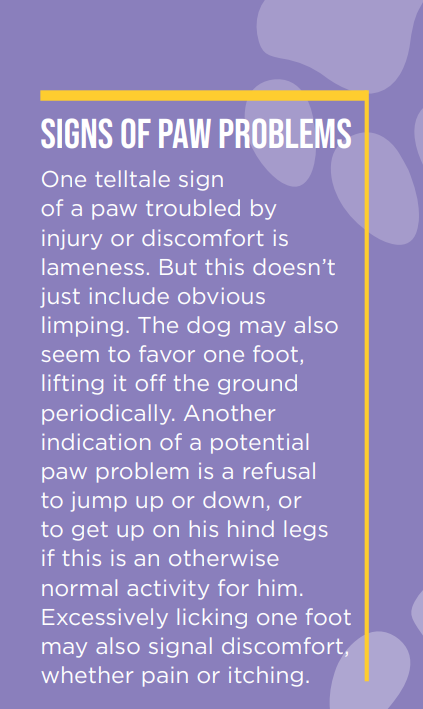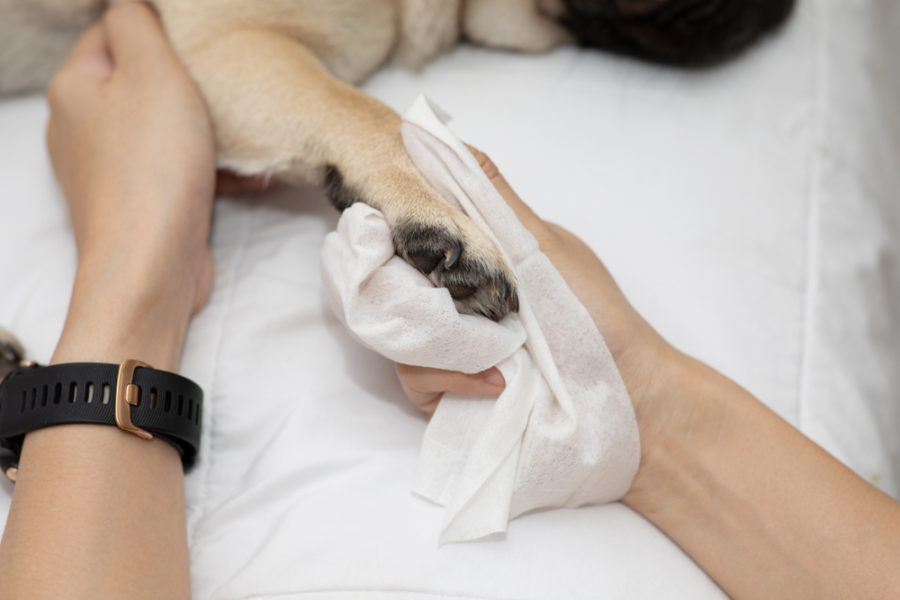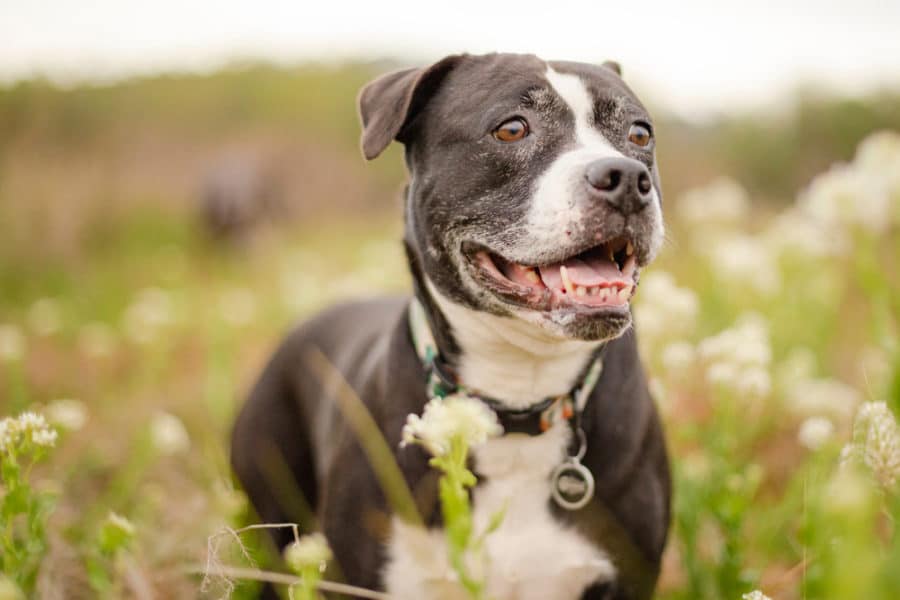Taking care of your dog’s paws isn’t just an occasional task. Tending to his tootsies year round helps ensure he keeps all four feet on the ground.
When it comes to healthcare for our dogs, we sometimes take their feet for granted and leave them out of the equation. But your canine’s paws should be an integral part of his care regimen, whatever the season. If your dog’s feet are sore or injured, his mobility and well-being can suffer, and that’s no fun for either of you. Here’s how to factor his feet into your canine’s care year round.
Check his feet regularly
Making a regular ritual out of thoroughly checking your dog’s paws throughout the year helps ensure you’ll find any issues before they become serious problems. This includes inspecting the condition of his pads, looking between his toes, checking his claws, and also feeling the sides and top of each foot.
A healthy foot should have tough but supple paw pads, without excessive dryness or any cracks, punctures or splits. His claws shouldn’t be so long that his feet angle upwards when he stands or walks. Any sores, warts, or unusual lumps or bumps anywhere on the foot, including the ankle area, should be investigated by your veterinarian. A foul odor or inflammation between the toes are also signs of a problem and should be checked out – dogs can get allergies or yeast infections in this areas, which can lead to excessive licking and chewing.
Be sure to keep his claws trimmed to a comfortable length – your vet or groomer can help you with this if you’re not confident about doing it yourself. You can also trim the hair between his toes if it gets too long.
Paw care through the seasons
Let’s take a look at some tips and tricks to keep your pup’s paws in optimal condition all year round.
Dust and pollen and debris – oh my!
A particularly important time to check your dog’s paws is after a walk or outdoor playtime. Wiping down his feet with a damp cloth helps remove any potential allergens such as dirt or pollen, as well as evict any little critters he may have picked up while exploring the park or running up the trail. During the winter, wiping his paws cleans them of road salt; in the spring and summer, it gets rid of any potential pesticide residues.
Should you find a foreign object, such as a leaf or small twig, caught between his toes or in the hair of his feet, remove it right away either by hand or by carefully cutting it away with grooming clippers. If a stick, stone, or other foreign body (e.g. a piece of glass or metal) is embedded in his foot or toes, a trip to the vet is in order.
Ouch! Burrs, foxtails and thorns
One pivotal reason why it’s so important to check your dog’s feet on a daily basis is because of the dangers of burrs, foxtails and thorns. These are found most often during the summer or fall, but are present all year long and become even more widely scattered on windy days.
While some objects are easily removed from your dog’s feet, the sharp nature of these three culprits makes them capable of piercing through the webbing between his toes if they’re not spotted and removed immediately. Unfortunately, the more your dog walks on them, the more they dig into his feet, stabbing the skin with each step. If you notice any of these nasties tangled in your dog’s paw hair, immediately remove them by hand or cut them away.
If your dog is still walking on all four feet, yet you notice that a burr, foxtail or thorn has pierced the paw pad or webbing between his toes, act quickly. If the object is still protruding far enough to be grasped with tweezers, one veterinarian’s instructions is to first thoroughly wash the foot with soap and water, pour a few drops of hydrogen peroxide on the wound to prevent infection, and remove the object with a pair of sterilized tweezers. However, if you see your dog limping or notice a bleeding/injured paw, take him to the vet as soon as possible for help, whether the problem is a superficial invader or something lodged too deeply in his foot to be seen by the naked eye.
Too hot to handle
Asphalt, concrete and sand can become incredibly hot on a sizzling summer day. You wouldn’t walk on these surfaces in your bare feet, and neither should your dog – it can be quite damaging even with thick paw pads. One way to determine whether or not the surface is too hot for your dog is to rest your hand on the ground for about ten seconds. If the temperature is comfortable enough for your skin, it should also be comfortable enough for your pup. But if your hand gets too hot after just a few seconds of contact, either invest in a set of dog boots, or go for walks earlier in the morning or later in the evening, when outdoor surfaces are cooler.
 Baby, it’s cold outside
Baby, it’s cold outside
Certain breeds, like huskies and Malamutes, love cold weather and have the coats to help withstand it. Yet, there are still several reasons to be mindful of your dog’s feet in extremely bitter temperatures.
Three points to consider are the dangers of slipping on icy surfaces during a fast-paced play session, added stress and pain for achy/arthritic legs in older dogs — and frostbite. Yes, dogs can get frostbite! While this condition most commonly affects the ears and the tip of the tail, some veterinarians state that a dog’s feet can also suffer from frostbite in some circumstances, despite the thick skin and high fat content characteristic of canine paw pads. Either way, extreme cold can be very uncomfortable for your dog’s paws — if you’ve ever seen him constantly lifting his feet when walking over snow or ice, you know the temperature is too low for him. A simple solution is to have your dog fitted out with a set of boots to protect his feet from the searing cold of ice and snow. Buy a product that has a good lining, and soles that will help prevent slips and falls.
Even if your dog doesn’t need boots, be sure to check his feet for snowballs that can accumulate in the hair between his toes and make walking uncomfortable.
What if he doesn’t want his feet touched?
It won’t be easy to examine your dog’s feet if he doesn’t like having them touched. However, you can gradually teach him to accept this form of handling. Start slowly and be patient, and keep sessions short to begin with. Give your dog a high-value treat and lots of praise every time he lets you touch and then handle each foot.
If he snaps or tries to bite you when you go near his feet, ask your veterinarian, groomer, or a positive trainer for guidance and help. Depending on their background and past experiences, some dogs may need extra assistance and time to get used to having their feet handled.





